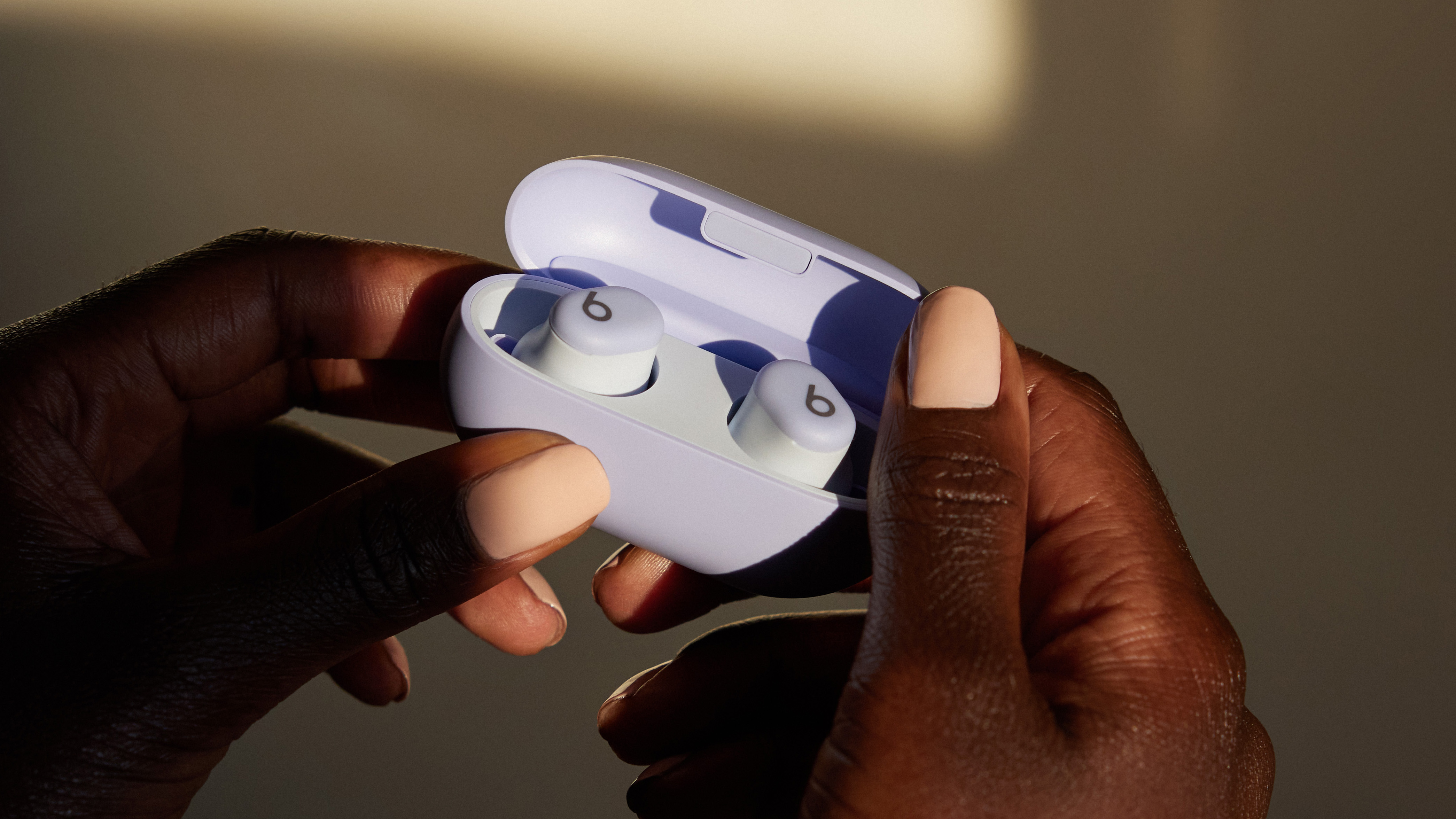Beats has announced two new products in its ‘Solo’ line-up: Beats Solo 4 on-ear wireless headphones, and a pair of Beats Solo Buds, which are its smallest and cheapest true wireless earbuds to date.
The Beats Solo Buds are really interesting – they’re aimed at being super portable and more affordable, and Beats made some intriguing decisions to get there. They cost $79 / £79 / AU$129, and their case is 40% smaller than the case for the Beats Studio Buds Plus – and the buds themselves are notably smaller (and come with four sizes of ear tip, including an extra-small size, just like AirPods Pro 2). The design of the buds looks a lot like a chibi version of the Studio Buds Plus – ie, smaller, more rounded and cuter – but still with the smart finger-grabbable design and button on the outside.
But to get such a small case, Beats has dropped any kind of battery in the case. Unlike basically all the other best true wireless earbuds, the Beats Solo Buds only have battery in the earbuds themselves. However, they offer 15 hours of battery life from the buds, which is way beyond basically anything else. You actually get 15 hours in total from the five-star Sony WF-C700N, but that’s split between 7.5 hours from the buds, and another 7.5 from the case… though that’s with noise cancellation turned on, so the Sony buds are capable of more if you turn it off.

Speaking of which, the Beats Solo Buds don’t come with active noise cancellation, or Spatial Audio, but they do have other smart features, including fast pairing and auto-switching between devices for both Apple and Android/Chromebook, and Find My support on both platforms. They also have Audio Sharing for Apple devices with AirPods or other Beats headphones.
There’s no true multi-point pairing Bluetooth pairing support (so no easy switching across an Android phone and a Windows laptop), and no higher-res wireless connectivity. Some of the best budget wireless earbuds offer these features at a similar price or even cheaper – such as the Earfun Air Pro 3 or the 1More PistonBuds Pro Q30 – but they’re not as small or stylish as the Beats, and lack the Apple-focused features.
The Beats Solo Buds’ will launch on June 6, 2024. They’re available in Matte Black, Storm Gray, Arctic Purple and Transparent Red.
Solo 4 arrives at last

Meanwhile, the Beats Solo 4 are the kind of update to the – unbelievably – more-than-seven-year-old Beats Solo 3 Wireless headphones that you might expect. They cost $199 / £199 / AU$329, and like the previous model they’re on-ear headphones with a focus on comfort. They have deep, well-cushioned ear pads, and they weigh just 217g / 0.48 lbs, which is on the lighter side compared to 250g for the Sony WH-1000XM5.
They have an all-new acoustic design with a 40mm driver, and to make the most of that you’ve got Personalized Spatial Audio when used with Apple devices, and the option for hi-res lossless USB-C audio input, as well a standard 3.5mm jack – and Bluetooth, naturally. There’s only regular Bluetooth here – if you want hi-res, you gotta stick with wired sound.
Like the Beats Solo Buds, they support fast-pairing and auto-switching devices for both Apple and Android setups, and Find My support on both platforms. And also like the Solo Buds, they lack active noise cancellation and native multi-point Bluetooth pairing. Lacking ANC does, at least, mean you get a very healthy 50 hours of battery life per charge.

This could make them a tough sell at this premium price. You can get the likes of the Sony WH-1000XM4 for the same kind of price, which offer a lot more features – we’ve even seen the mighty Sennheiser Momentum 4 Wireless headphones drop to this kind of price during sales, so I worry about the Beats seeming like strong-enough value.
But I’ve tried the Beats a little already, and the passive sound isolation is actually very impressive, thanks to those deep ear pads, and Beats is making a point that the Solo 4 are good for exercise in a way that the Sony and Sennheiser are not designed for, so they have that in their corner for anyone who prefers not to use earbuds at the gym.
And also, the Beats Studio Pro headphones dropped to half price only a few weeks after their launch, so if it becomes common for the Solo 4 to fall to under $150 / £150 regularly, they’ll be much more tempting for a lot of people.
The Solo 4 are available from May 2, 2024. They’re available in Slate Blue, Cloud Pink or Matte Black.







